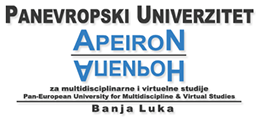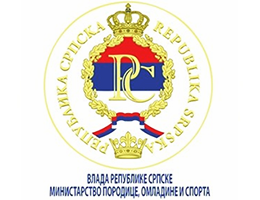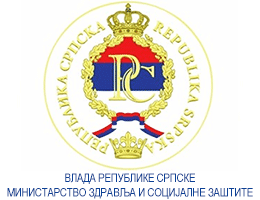ANEMIA IN FEMALE ATHLETES: A CROSS-SECTIONAL STUDY OF TEAM AND INDIVIDUAL SPORTS WITH DISCIPLINE-SPECIFIC RISKS
Volume 15, Issue V (2025)
Volume 15, Issue V (2025)
ANEMIA IN FEMALE ATHLETES: A CROSS-SECTIONAL STUDY OF TEAM AND INDIVIDUAL SPORTS WITH DISCIPLINE-SPECIFIC RISKS
Abstract:
This study examined the prevalence of ane- mia among female athletes in team ball sports (volley- ball, soccer, and basketball) and individual sports (ka- rate, dance, and athletics) aged 11 to 35. The results showed no statistically significant difference in anemia prevalence between athletes in team sports (2.15%) and individual sports (1.73%). Older female athletes (19–35 years) demonstrated a significantly higher prevalence of anemia compared to younger athletes (11–18 years), re- gardless of the type of sport. Within the individual sports group, significant differences were observed, with track and field athletes showing a higher anemia prevalence (7.14%) compared to athletes in karate and dance. These findings suggest that the type of sport does not signifi- cantly influence anemia risk, but specific disciplines with high aerobic demands, such as athletics, carry a high- er risk. The study highlights the need for targeted ap- proaches to anemia prevention and monitoring based on the sport and physical demands of individual disciplines.
Keywords:
Anemia, female athletes, team sports, indi- vidual sports, prevalencee
Full Text:
References:
Ackerman, K. E., Holtzman, B., Cooper, K. M., Flynn, E. F., Bruinvels, G., Tenforde, A. S., … & De Souza, M. J. (2019). Low energy avail- ability surrogates correlate with health and performance consequences of Relative Energy Deficiency in Sport. British Journal of Sports Medicine, 53(10), 628-633.
Beard, J., & Tobin, B. (2000). Iron status and exercise. American Journal of Clinical Nutrition, 72(2 Suppl), 594S-597S.
DellaValle, D. M., & Haas, J. D. (2012). Impact of iron depletion without anemia on performance in trained endurance athletes at the beginning of a training season: A study of female collegiate rowers. International Journal of Sport Nutrition and Exercise Metabolism, 22(6), 463-469.
DellaValle, D. M. (2013). Iron supplementation for female athletes: Effects on iron status and performance outcomes. Current Sports Medicine Reports, 12(4), 234-239.
Fallon, K. E. (2008). The clinical utility of screening of biochemical parameters in elite athletes: Analysis of 100 cases. British Journal of Sports Medicine, 42(5), 334-337.
Fudge, B. W., Westerterp, K. R., Kiplamai, F. K., Onywera, V. O., Boit, M. K., Kayser, B., & Pitsiladis, Y. P. (2020). Evidence of negative energy balance using doubly labeled water in elite Kenyan endurance runners prior to competition. American Journal of Human Biol- ogy, 32(5), e23378.
Hinton, P. S. (2014). Iron and the endurance athlete. Journal of the American Dietetic Association, 104(5 Suppl 1), S82-S87.
Komatsu, T., Yamasawa, F., Dohi, M., Akama, T., Masujima, A., Kono, I., … & Kawahara, T. (2018). The prevalence of anemia in Japanese Universiade athletes, detected with longitudinal preparticipation medical examinations. Journal of General and Family Medicine, 19(3), 102-108.
Malczewska, J., Blach, W., & Stupnicki, R. (2000). The effects of physical exercise on the levels of hemoglobin and hematocrit in sportsmen.
Biology of Sport, 17(1), 67-84.
Mettler, S., & Zimmermann, M. B. (2010). Iron excess in recreational marathon runners. European Journal of Clinical Nutrition, 64(5), 469- 474.
Nabeyama, T., Suzuki, Y., Yamamoto, K., Sakane, M., Sasaki, Y., Shindo, H., … & Kami, M. (2020). Prevalence of iron deficiency among university kendo practitioners in japan: an observational cohort study. Journal of the International Society of Sports Nutrition, 17(1)
Nicotra, D., Arieli, R., Redlich, N., Navot-Mintzer, D., & Constantini, N. (2023). Iron deficiency and anemia in male and female adolescent athletes who engage in ball games. Journal of Clinical Medicine, 12(3), 970.
Nieman, D. C., Henson, D. A., Gusewitch, G., Warren, B. J., Dotson, R. C., Butterworth, D. E., & Nehlsen-Cannarella, S. L. (2001). Physical activity and immune function in elderly women. Medicine & Science in Sports & Exercise, 25(7), 823-831.
Peeling, P., Dawson, B., Goodman, C., Landers, G., & Trinder, D. (2007). Athletic-induced iron deficiency: New insights into the role of in- flammation, cytokines and hormones. European Journal of Applied Physiology, 103(4), 381-391.
Peeling, P., Sim, M., Badenhorst, C. E., Dawson, B., Govus, A., Abbiss, C. R., … & Trinder, D. (2016). Iron status and the acute post-exercise hepcidin response in athletes. PLoS One, 11(3), e0147998.
Petkus, D. L., Murray-Kolb, L. E., & De Souza, M. J. (2017). The unexplored crossroads of the female athlete triad and iron deficiency: A nar- rative review. Sports Medicine, 47(9), 1721-1737.
Rowland, T. W. (2011). Iron deficiency in athletes. Journal of Pediatrics, 117(6), 846-848.






